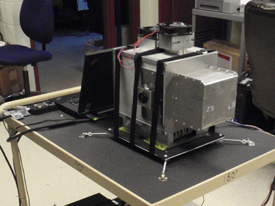Emotional attachment to robots could affect outcome on battlefield
Too busy to vacuum your living room? Let Roomba the robot do it. Don’t want to risk a soldier’s life to disable an explosive? Let a robot do it.
It’s becoming more common to have robots sub in for humans to do dirty or sometimes dangerous work. But researchers are finding that in some cases, people have started to treat robots like pets, friends, or even as an extension of themselves. That raises the question, if a soldier attaches human or animal-like characteristics to a field robot, can it affect how they use the robot? What if they “care” too much about the robot to send it into a dangerous situation? (more…)

